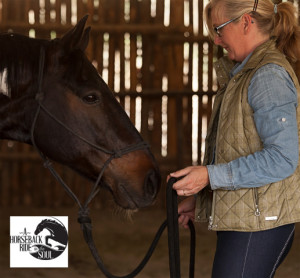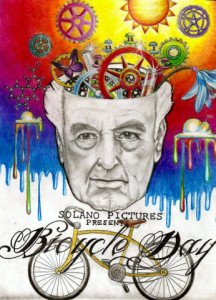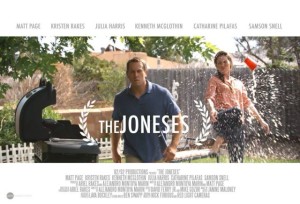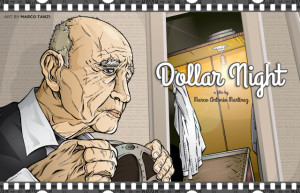Tags
Related Posts
Share This
NM Shorts
The Santa Fe Independent Film Festival‘s New Mexico Shorts Program of 2014 has again reminded the Santa Fe film audience that the voices of New Mexico are alive and well. This year, the Center for Contemporary Arts screened five selected short films, some of which were shot in New Mexico and others which were made by New Mexican filmmakers. The commonality stops there. From documentary-style narratives to formulaic Westerns, the themes and stories ranged in all genres and in all styles. The variety, perhaps, reflects that original guerrilla-filmmaking spirit which set the festival’s foundation six years ago.
A Horseback Ride to the Soul, directed by Aimee Barry Broustra
SFIFF Description: For the rider and non-rider alike “A Horseback Ride to the Soul” explores the ways in which interactions between human and horse can lead to a deeper understanding of our selves and our relationship to the world.
An official selection of the Albuquerque Film and Media Experience and Long Beach India International Film Festival, “A Horseback Ride to the Soul” is more documentary than narrative, but we can overlook that due to the multiple categories the content explores. First, the location of a Santa Fe Ranch filled with beautiful horses makes for some gorgeous cinematography. Second, the subject of horse and rider relationship is not your typical rancher’s story. The technique is Collaborative Horsemanship, and it implies “an approach to groundwork and riding implementing prey-to-prey communication” in order to “establish a relationship of trust between human and horse.”
The program is facilitated by Kelly Wendorf, native New Mexican and CEO of The Institute of the Southwest, who believes in a non-aggressive approach to riding. “How can human best serve horse?” Wendorf says in her interview, “How can human, through congruency, act as a herd leader?” Wendorf introduces the term “horse therapy” in her program and the technique becomes especially convincing when juxtaposed with early ranching footage, like horses being contained and mistreated in cages. In the documentary, we follow also Wendorf’s pupil, Aimée Barry Broustra (the director and producer of the film), who executes the steps of Wendorf’s training course that begins with a silent meet and greet and ends with a unique man and beast loyalty. Broustra admits that her self confidence was at an all time high when she and her horse became one personality with a shared authority. And other than some hit and miss sentimental music cues, the documentary itself was a beautiful representation of the changing views on horse companionship in the 21st century.
Bicycle Day, directed by Stephen Turselli
SFIFF Description: The true story of a botanist who accidentally discovers the psychoactive effects of LSD during a ride on his bicycle in 1943.
If you are not familiar with the origin story of Swiss botanist Albert Hofmann’s discovery of LSD, then what you need to know is this: the date is April 19, 1943 and the first ever “trip” takes place on a bicycle ride. The discovery was an accident. In this film, director Stephen Turselli attempts to recreate Hofmann’s discovery and consequently the out-of-world bike ride that, on the screen, seems to last a whole day. There are some interesting visual contrasts of black/white and color, in fact, the lack of color to the later over saturated visuals represents the threshold between the character’s normal state and the abnormal state. And though the change of locations (four different areas of New Mexico) is discombobulating at times, perhaps that and the added close ups and point of view shots serve the “tripping” effect. Director Turselli adds in his Kickstarter summary that he and his crew’s goal was to “truly capture all the beauty that lies within the New Mexican borders.” Still, for basing a film on historic events, the length of scenes, the inconsistency of sound and the lack of character development takes away from what could have really been an interesting take on Hofmann’s discovery.
The Joneses, directed by Alejandro Montoya Marin
SFIFF Description: The Joneses are the perfect couple. No one will take that away… No one.
Here again we experience the talents of New Mexican actor, writer, director and producer Matt Page (creator of web series “Enter the Dojo” and participant in this year’s Shoot the Stars). For the Albuquerque 48 hour film festival, Page teamed up with director Alejandro Montoya Marin to create a comedy that hits every mark for the modern movie audience. Yes, the hard core rap song throughout helps the hilarity of a couple who becomes homicidally jealous of their neighbors, but it is the chemistry of Mr. and Mrs. Jones, played by Page and Kristen Rakes, that make for an entertaining experience. The timing of edits, the use of silence and the slow motion effects may be typical in comedy, but it takes people who’ve mastered short filmmaking to do all three very well in six minutes. Shot in Albuquerque, this cast and crew makes the best use of 48 hours.
Dollar Night, directed by Marco Antonio Martinez
SFIFF Description: Andy is a vibrant 80 year old theater projectionist whose love and passion for cinema is tested when faced with the closing of his theater.
“Dollar Night” is what short filmmaking is all about. A film about film. A cinematic reminiscing. Remember the theaters that projected film reels? Even if you’ve never sat on red cushioned seats, listening to the sound of frames running through the projector behind you while the bulb lights the white scrim, Martinez’s “Dollar Night” will bring that experience to life through beautiful imagery, a unique character, and a touching score. “Dollar Night” is an example of a film that uses the edit and the close up to carry story and the little dialogue that is used is carefully placed, not a word wasted. The tension between the old ways, the elderly owner of the theater, and the new ways, the age of digital projection is relieved when a young boy decides to pay a dollar to watch a film at the elderly man’s theater. Not only does the elderly man make the boy’s day, but the idea of selling a show for a dollar saves the theater.
Lightning In The Hand, directed by Joey Grossfield and winner of Best New Mexican Short (Narrative)
SFIFF Description: Big business, the law, struggling silver miners, and a lone Apache clash over a claim dispute in 1890s New Mexico.
The Western will never die. Thank goodness. As director Joey Crossfield writes on his Kickstarter page, “westerns are often about a transitional moment in history, when old values are no longer useful and new values don’t yet exist. What I’m drawn to are the people that are caught in these moments, who may have outlived their usefulness to a society that now discards them.” This sentimentality is subtly drawn out in this short story about the daughter of a New Mexican rancher in the 1890s who refuses to sell her land to outsiders. The unexpected twist in the scene that plays out in a predictable manhandling of the woman comes from the young Apache character. As stoic as he is while the local marshall and his gunslinger threaten the ranch, his tactics are surprisingly heroic, but not in a rogue Clint Eastwood sort of way. Shot at Bonanza Creek Ranch, the location of the film, the talent of the actors, and the beauty of cinematography all work well to create a fresh depiction of the Western. And as the Apache rides off (not quite into the sunset) the resolution of the film feels satisfyingly realistic and justified.
2014 Santa Fe Independent Film Festival’s Juried Awards
Best Short Documentary (Tie): One Year Lease by Brian Bolster and Stumped by Robin Berghaus
Best Short Narrative: The Gunfighter
Best Animated Short: Musical Recordings from the Realms of the Dead
Best New Mexican Short(Documentary): Pie Lady of Pie Town by Jane Rosemont
Best New Mexican Short(Narrative): Lightning in the Hand by Joey Grossfield
Best Documentary Feature: The Winding Stream by Beth Harrington
Best Narrative Feature(USA or International): Four Corners by Ian Gabriel
Best Narrative Feature(International): Four Corners by Ian Gabriel
Best Narrative Feature(USA): The Homesman by Tommy Lee Jones
Audience Choice Awards:
Audience Choice Best Short Film: Pie Lady of Pie Town by Jane Rosemont
Audience Choice Best Documentary Feature: Marmato by Mark Grieco
Audience Choice Best Narrative Feature: The Foxy Merkins by Madeleine Olnek











 Jackalope Magazine is the student magazine of Santa Fe University of Art and Design. Building on the interdisciplinary nature of our education, we aim to showcase the talent of our university and character of our city.
Jackalope Magazine is the student magazine of Santa Fe University of Art and Design. Building on the interdisciplinary nature of our education, we aim to showcase the talent of our university and character of our city.
Recent Comments